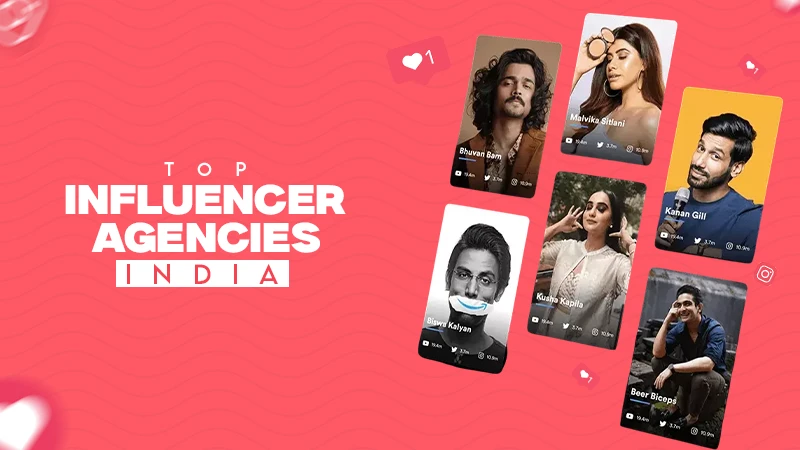There is a deluge of influencers on social media, and finding the right one that fits one’s brand’s needs can be daunting. Companies must cast their nets to spot individuals having similar values, content, and followers as their brands. These companies can utilize influencer marketing platforms or social media analytics tools, and even hire agencies to find and assess possible collaborators.
Key Opinion Leaders (KOLs) vs. Influencers: A Comparative Guide
Did you know 80% of people today purchase a product or avail of a service as a result of influence?
The modern influencer industry is booming as we speak, and the survival of present-day brands without it is hard. In today’s interconnected world, the concepts of influence and leadership have become predominant, leading to the emergence of key opinion leaders, also referred to as KOLs.
This begs the question: Who are KOLs? In this guide, we’ll learn about the new crop of influencers and how they differ from the traditional types of influencers.
The Origin of Influencers: Tracing the History
The concept of KOL influencers can be traced back centuries, rooted in an intricate, ever-shifting web of human relationships and societal dynamics. The word influencer gained its origin in the early 1600s, signifying those who can sway beliefs, shape opinions, and trigger change.
Interestingly, the concept of influence extends beyond the human world, as evidenced by its historical connections to celestial movements and astrological interpretations.
Cut to the present, the term ‘influencer’ has evolved into a unique role within social media ecosystems. Influencers are now hailed as digital trendsetters and content creators with a substantial following and considerable power to impact and unleash change.
By partnering and creating engaging, relevant, and impactful content, they can drive brand awareness and change consumer behaviors, leading to profitability and growth for both brands and themselves.
Who are KOLs?
A KOL, or key opinion leader, refers to a person whom everybody has a high regard for and who is an opinion expert in a chosen domain. They are exactly the type of people that many in a given field value, look up to, and follow when they speak out on social media. These authority figures carve their platforms by showing their expertness and proficiency in a particular topic for a long period of time.
As the KOLs excel in their chosen fields with several notable accomplishments and skills, their influence and credibility are enhanced greatly. Brands can engage in all social media marketing campaigns by collaborating with one of them, which enables them to reach out to the right audience and therefore form an opinion of the brand.
KOLs vs. Influencers: Understanding Key Differences
Please refer to the table below to compare the distinctions between Key Opinion Leaders (KOLs) and influencers:
| Aspect | Key Opinion Leader (KOL) | Influencer |
| Platform of Origin | Parallel professions such as journalists, entrepreneurs, writers, or politicians. | Native to social media platforms where the concept was developed. |
| Communication Frequency | May not frequently post on social media. Communication may occur through blogs, YouTube, or other channels, but not the main means. | Frequently post on social media, engaging with a large following. |
| Product Recommendations | They rarely recommend products related to their professions for economic compensation. May associate with brands for compensation in non-profession-related endorsements. | Recommend products and services to their followers, often for compensation. |
| Brand Collaboration Approach | Brands often have a hands-on approach to content creation. Requires creative teams, photoshoots, or recording sessions. | Brands give influencers creative freedom, allowing them to design posts that suit their audience. |
| Motivation for Audience | Recommendations are seen as complementary to their day-to-day activities. | The community of followers is essential, and recommendations directly impact their credibility and identity as influencers. |
Integrating Key Opinion Leaders (KOLs) into Your Marketing Strategy
Incorporating KOLs into marketing strategies offers brands unparalleled opportunities to amplify their visibility, credibility, and audience engagement.
By collaborating with KOLs and learning more about them, you can forge meaningful relationships and leverage them to improve brand perception and affinity. KOLs work as a potent amplifier of brand values and narratives, reach different folds of target markers, and foster authentic connections that resonate.
KOL partnerships facilitate thought leadership initiatives, industry insights, and expert opinions, positioning brands as authoritative voices within their respective domains and fostering industry-wide conversations.
What’s more? KOLs play an instrumental role in bolstering community engagement – enabling dialogue, feedback loops, and user-generated content that enrich your brand experiences and foster brand loyalty.
Why to Collaborate With a KOL?
Collaborating with Key Opinion Leaders (KOLs) can offer numerous benefits for businesses and individuals alike:
- Enhanced Credibility: The KOLs inject credibility and professionalism into their endorsements, thus building consumer faith in your brand.
- Brand Association: KOLs are mostly linked with branding campaigns that, in turn, elevate the brand’s reputation rather than promote particular products.
- Competitive Edge: They have a background, which makes your brand different from others and reliable.
- Alignment with Brand Values: Working with KOLs who are consistent with your brand’s beliefs, like friendship and aptitude, is the first step to creating successful marketing campaigns.
- Content Creation: KOLs are experts in creatively producing content that has an impact on the audience. Collaborating with them can provide you with some top-notch stuff that you can use in your own marketing channels, which will save you time and money.
- Social Proof: When KOLs mention your brand name or product, it suggests to their audience that your offering exists and is viable. By addressing the doubts or objections customers might have about your product or service, you can increase the number of people who make purchases from you.
- Insights and Feedback: KOLs usually know the buzzwords in the industry, such as trends and consumer choices. Cooperation with them can give you precious tips that can be used to develop your offerings or adjust your marketing strategies.
Choosing the Right Partner
When it comes to choosing between influencers and KOLs for collaborative marketing endeavors, you need to consider some factors and also understand what KOL is.
You need to understand how well your influencer’s or KOL’s audience aligns with your brand’s target demographic values or messaging objectives. Furthermore, you need to evaluate the content style, expertise, and themes of potential collaborators to ensure alignment with your brand, entity, and storytelling approach. You need to consider your marketing objectives.
Analyze engagement matrices, audience interactions, and content performances to understand the effectiveness of influencer partnerships in driving brand awareness conversions and audience engagement. You must consider the long-term impact of influencer or KOL collaborations on brand perception, loyalty, and market positioning, aiming for sustained relationships that foster brand advocacy and audience trust.
The Bottom Line
With the growth of the digital world, consumer behavior is changing the role of influencers and of course, KOLs might be adapting and diversifying in the future. It means you have to be agile, combining the use of data-based intelligence with consumer trends and collaborative methods to fully utilize the digital power.
Thus, influencers and opinion leaders act as two essential yet interdependent columns for digital influence, giving you an incomparable chance to bond, communicate, and present yourself to your prospective target audience. Through collaboration, you can navigate the intricate digital landscape, boost your brand stories, and build long-term relationships that push up your brand in the constantly changing market.
How can I find the right KOL influencer for my brand or campaign?
How can I measure the effectiveness of a KOL or influencer campaign?
The performance of KOL and influencer campaigns can be evaluated by taking into account various metrics such as reach, engagement (likes, comments, and shares), click-through rate, website traffic, and, at the end of the day, conversions. It’s important to keep an eye on these numbers before, during, and after, the campaign to gauge its effectiveness and bring out the intended ROI from the campaign.
Should I prioritize follower count or engagement rate when selecting a KOL or an influencer?
A high follower count is a key indicator of an influencer’s reach and impact. However, solely focusing on the metric wouldn’t yield the best results. Brands must scrutinize the content maturity and engagement rate of a KOL influencer before taking the plunge.
The engagement rate is directly proportional to the quality of interactions and the connection they have forged with the target audience over the years. Emphasizing the engagement rate over the follower count can help brands save the day.
What are some common mistakes to avoid while working with KOLs or influencers?
In the majority of cases, brands lose high-growth opportunities by committing a few common mistakes. Certain ones involve the lack of well-defined objectives, lowering the priority of originality and adhering to the brand values, micromanaging the influencers’ content creation process, and a unilateral flow of communication. Companies that keep in mind the principles of trust, transparency, and mutual respect are likely to succeed.







